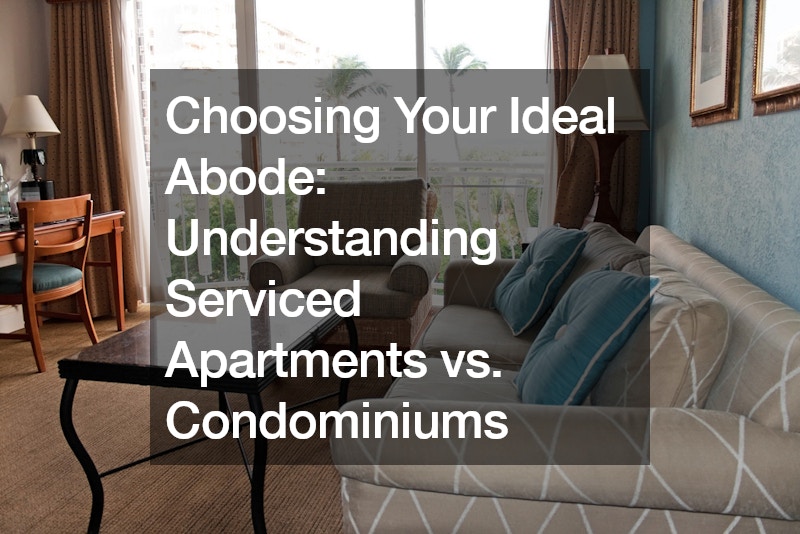
Selecting a place to live involves careful consideration of your lifestyle and needs. For those seeking a convenient and hassle-free living arrangement, serviced apartments often emerge as a tempting option. However, for others, the privacy and space offered by condominiums might be a better fit. Understanding the key differences between these two types of residences is crucial for making an informed decision.
Serviced Apartments: Convenience at Your Doorstep
Serviced apartments cater primarily to short-term stays, often attracting business travelers or individuals requiring temporary accommodation. These fully furnished units resemble apartments but come with additional services typically found in hotels.
Here are some key characteristics of serviced apartments:
Short-Term Focus: Leases are typically for shorter durations, ranging from weeks to months, offering flexibility for those with transient needs.
Hotel-Like Services: Residents enjoy amenities like housekeeping, laundry services, and sometimes even on-site dining facilities, mirroring the convenience of a hotel stay.
Centralized Locations: Serviced apartments are often situated in prime locations near business districts, shopping centers, and public transportation, maximizing convenience for residents on the go.
Limited Space: While some serviced apartments offer spacious layouts, they tend to be smaller than traditional condominiums, particularly when considering the number of units within a building.
Higher Costs: Residents can expect to pay a premium compared to traditional apartments due to the included services and often commercially zoned locations, resulting in higher utility bills.
Condominiums: A Traditional Apartment Setting
Condominiums, on the other hand, cater to those seeking a more permanent residence. These self-contained units within a larger building offer a sense of ownership and a more traditional apartment living experience.
Here’s a closer look at what condominiums offer:
Long-Term Ownership: Residents own their individual units, granting them greater control and the potential for appreciation in value over time.
Privacy and Independence: Condominiums typically have fewer units per building compared to serviced apartments, leading to a quieter and more private environment. Residents manage their own utilities and have more control over their living space.
Wider Range of Sizes: Condominiums come in a variety of sizes, from studios to multi-bedroom units, allowing residents to choose a space that best suits their needs and budget.
Lower Overall Costs: While condo fees cover maintenance and shared amenities, residents generally pay lower costs for utilities compared to serviced apartments. However, purchasing and maintaining a condominium requires a significant upfront investment.
Amenities May Vary: Amenities in condominiums can vary greatly depending on the specific development. Some offer facilities like swimming pools, gyms, and common areas, while others may be more basic.
Making the Right Choice: It’s All About Needs
Ultimately, the decision between a serviced apartment and a condominium hinges on your priorities and lifestyle.
Consider Your Needs: If you require a short-term, fully serviced living arrangement and prioritize convenience over space, a serviced apartment might be ideal.
Budget and Investment: If you plan on staying in one place for a longer period, the potential for ownership and lower long-term costs might make a condominium a more attractive option. However, remember the initial investment required for purchase and maintenance.
Lifestyle Preferences: Those who value a quiet and private living environment may prefer a condominium. However, if you enjoy a dynamic atmosphere with readily available services, a serviced apartment could be a better fit.
By carefully evaluating your needs and priorities, you can make an informed decision that aligns perfectly with your desired lifestyle, whether it’s the convenience of a serviced apartment or the privacy and potential for ownership offered by a condominium.
.
